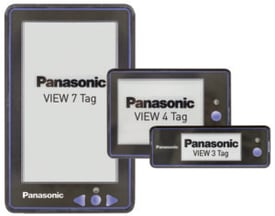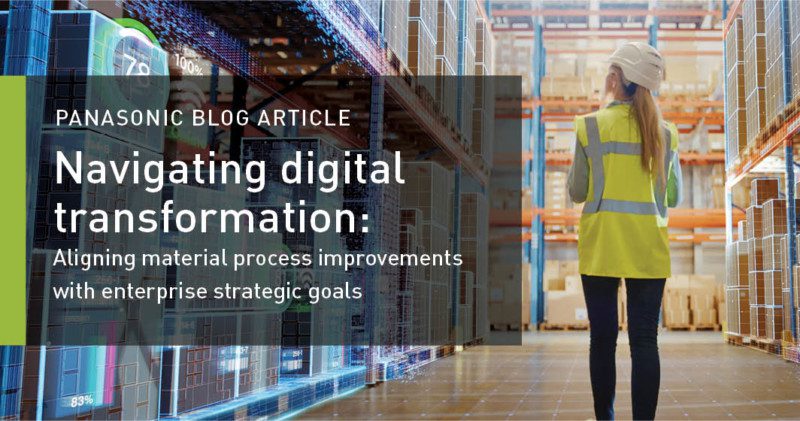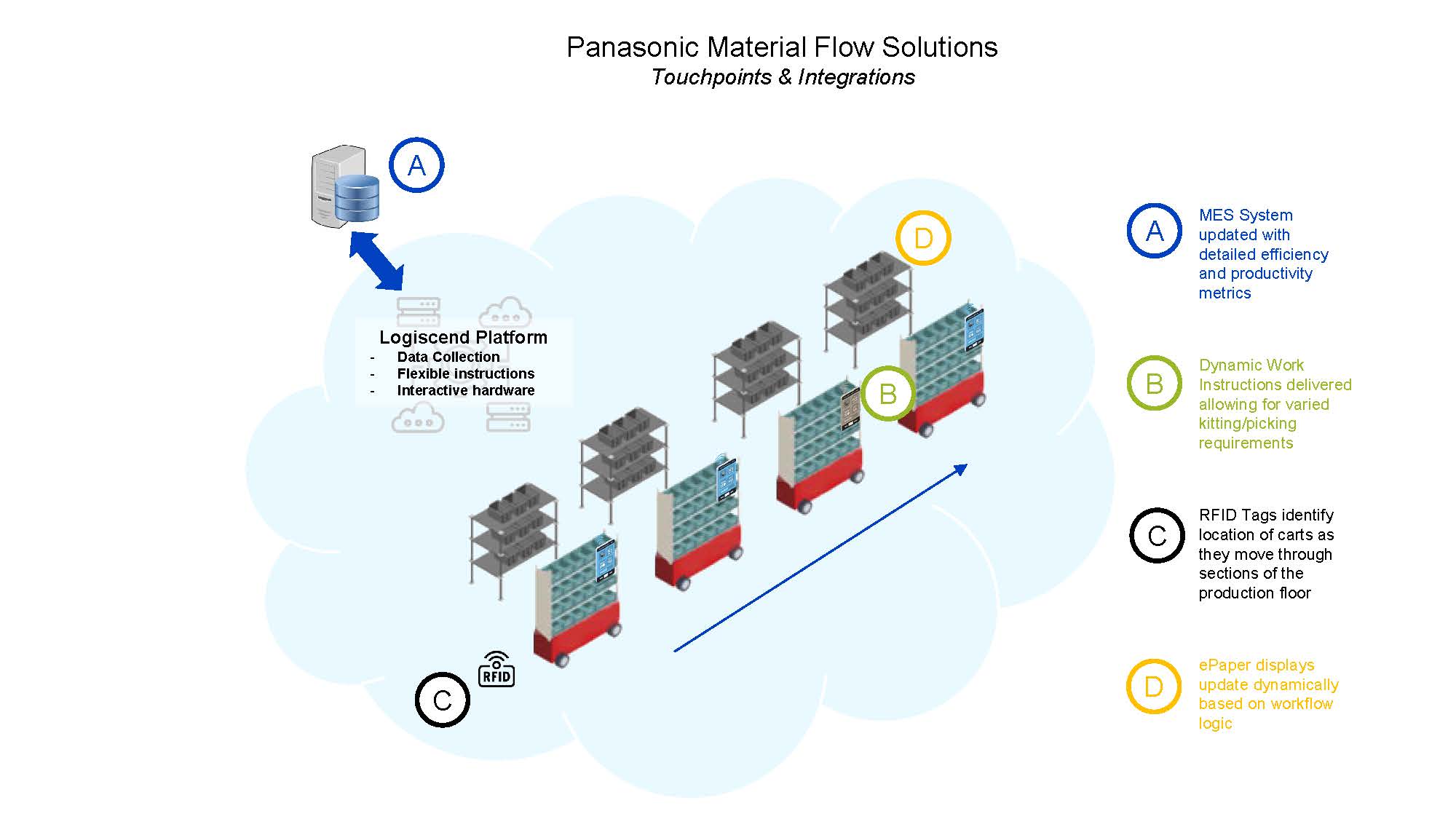Navigating digital transformation: Aligning material process improvements with enterprise strategic goals
- Panasonic Blog
- 3 mins
“When plant process improvements align with enterprise goals, digital transformation enjoys the most success,” explains Helen Titus, marketing and sales leader at Panasonic IIoT.
Digital transformation (aka Industry 4.0 IIoT automation) is on every plant manager’s wish list—to be accomplished sooner or later. Taking advantage of the material flow process improvements that can come from moving away from paper-based picking and kitting into the digital world, where the processes are transparent, is an obvious benefit. Adding the ability to locate assets and containers anywhere in your plant with associated work instructions gives you a major boost in flexibility that facilitates much smoother workflow to accommodate Just-In-Sequence or One-to-One production.
Digital transformation is a topic of interest at the plant level as well as in the boardroom
At the enterprise level, the C-suite in most public companies looks to demonstrate progress with Industry 4.0 potential improvements. These improvements often begin with a top-down overhaul of enterprise antiquated billing, forecasting, and ERP systems. At first, this may have little or no impact on the plant process improvements that are top priority to plant management and engineering.
A new study by Chief Executive Group and Amazon Web Services points out:
“Digital transformation isn’t just about implementing new technology; it is also about using technology to drive growth.”
The study goes on to make the following point:
“Leaders who envision reinvention for their business begin taking steps to invest in their strategy, process, people, and culture.”
Meanwhile, plant managers’ immediate goal is often to increase productivity and reduce costs; become more efficient with less labor; make better, faster decisions based on better data; and to digitize as much as possible. But as positive as these goals are, there are obstacles to slow down progress and to maintain the status quo.
Change can be disruptive
Any change, no matter how positive, can be disruptive—if only because it is new and different. There are often key employees who resist even the slightest change in time-worn processes. Their comfort zone is in the “tried and true” flow that generates paper pick sheets to kitters and pickers, sends sharks roaming the production lines to look for depleted parts, and takes weeks instead of hours to reconfigure the supermarket to meet the demands of a new model or custom order.
Change can be managed to preserve your process (if it’s working for you)
 The key to managing change in your material flow process is to understand it thoroughly from beginning to end. Take time to map out your current process. Look for steps that are wasteful and don’t add value. Most process flow steps can be replicated (and usually improved) with a digital transformation. In our experience, there is nothing you can do with paper that you can’t accomplish better, faster, and more efficiently with ePaper (which we use in our Panasonic VIEW Tags). Preserving your process—adding minor improvements and eliminating non-value adding steps—goes a long way toward making your team comfortable with the transformation.
The key to managing change in your material flow process is to understand it thoroughly from beginning to end. Take time to map out your current process. Look for steps that are wasteful and don’t add value. Most process flow steps can be replicated (and usually improved) with a digital transformation. In our experience, there is nothing you can do with paper that you can’t accomplish better, faster, and more efficiently with ePaper (which we use in our Panasonic VIEW Tags). Preserving your process—adding minor improvements and eliminating non-value adding steps—goes a long way toward making your team comfortable with the transformation.
Understanding your enterprise technology goals will allow you to support them
When you present your case for a technology upgrade like the digital transformation of your material processes, it will help if you make it clear that your material flow transformation partner offers built-in APIs that easily integrate with the most popular ERP or MES solutions. Also convey that the data transparency digital transformation provides can be important input into the enterprise technology upgrades that the C-suite may be considering. The true power of digital transformation comes from the data and visibility it provides to the organization, allowing for further process optimization and continuous improvement.
Choose your digital transformation partner wisely
One of the best ways to ensure that your transformation is as smooth and comfortable as possible is to work with an automation partner who will help you improve your processes while you align your new systems with your enterprise automation goals.


